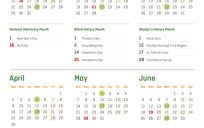“Never will we leave the palace of our perceptions … Our senses unite us in a common field of temporal glory,” said Diane Ackerman in A Natural History of the Senses.
Perhaps, for a moment, we need to stop the scampering after the new, next normal. Instead of working so hard, we should pause and reflect. We must recognize we have lost something we don’t know the full value of.
Sight and sound, through screens and speakers, are poor proxies for when we are in the presence of others. Virtually, we do not see, and are unconscious of, what passes between us made up of body language and facial expressions. Even if we don’t fully admit to multiple intelligences, we know we learn differently and value knowledge, experience, and talents differently in person. The narrowing of the channels to our screens and speakers is a poor substitute for the multi-level, multi-dimensional channels we experience in a physical office. We perceive each other through a multitude through not just spoken language, but body language and expressions as well.
We are physical beings who anchor meaning in physical spaces. The architecture of our buildings – the shapes, colors, textures, smells of our workplaces – create the environment for our interactions, and maybe even our performance. They become the super-structure for our work relationships, and maybe even our effectiveness. Lacking these physical foundations, what is the architecture for our interactions now?
Some of us are getting deliberate about dealing with these losses. A couple of notes from the home offices:
- At the start of isolating from each other, some noticed they were spending more time outside, almost unconsciously. Some have become more deliberate about feeding their senses and different ways of learning with the sensory cornucopia of a park or a trail.
- Physical book sales have increased as people value the tactile sense of holding a volume in their hands instead of subjecting themselves to another set of pixels on a screen.
We have not found a replacement for working with each other in the same space. That is a significant loss. Maybe virtual reality and other tools will eventually offer serviceable surrogates for the physical experience of working with others. Maybe not. Maybe we need to get creative and find ways toward the unconscious kinship of others at work. Yes, to deepen work relationships. Yes, to be more effective. Yes, to perform. But maybe most, for the humanness of it all.
Peter Bonner is an organizational development and performance innovator with expertise in federal agency assessments, leadership development and interagency/multi-sector initiatives. Peter has worked with more than 30 different federal entities and 10 interagency or multi-sector partnerships. For example, he managed and facilitated the process for the interagency team at VA, DoD, OPM, and other agencies to improve Veterans’ hiring. Peter has worked on Presidential Rank Award evaluation teams, assessing the accomplishments of Senior Executive Service members to be awarded this rare honor. He also served on the White House initiative on multi-sector leadership, an effort to use human-centered design techniques to develop leaders of the future. Finally, Peter helped design and has been a lead instructor on the Digital IT Acquisition Professional training program. You can connect with him on Twitter @PeterCBonner.





Leave a Reply
You must be logged in to post a comment.